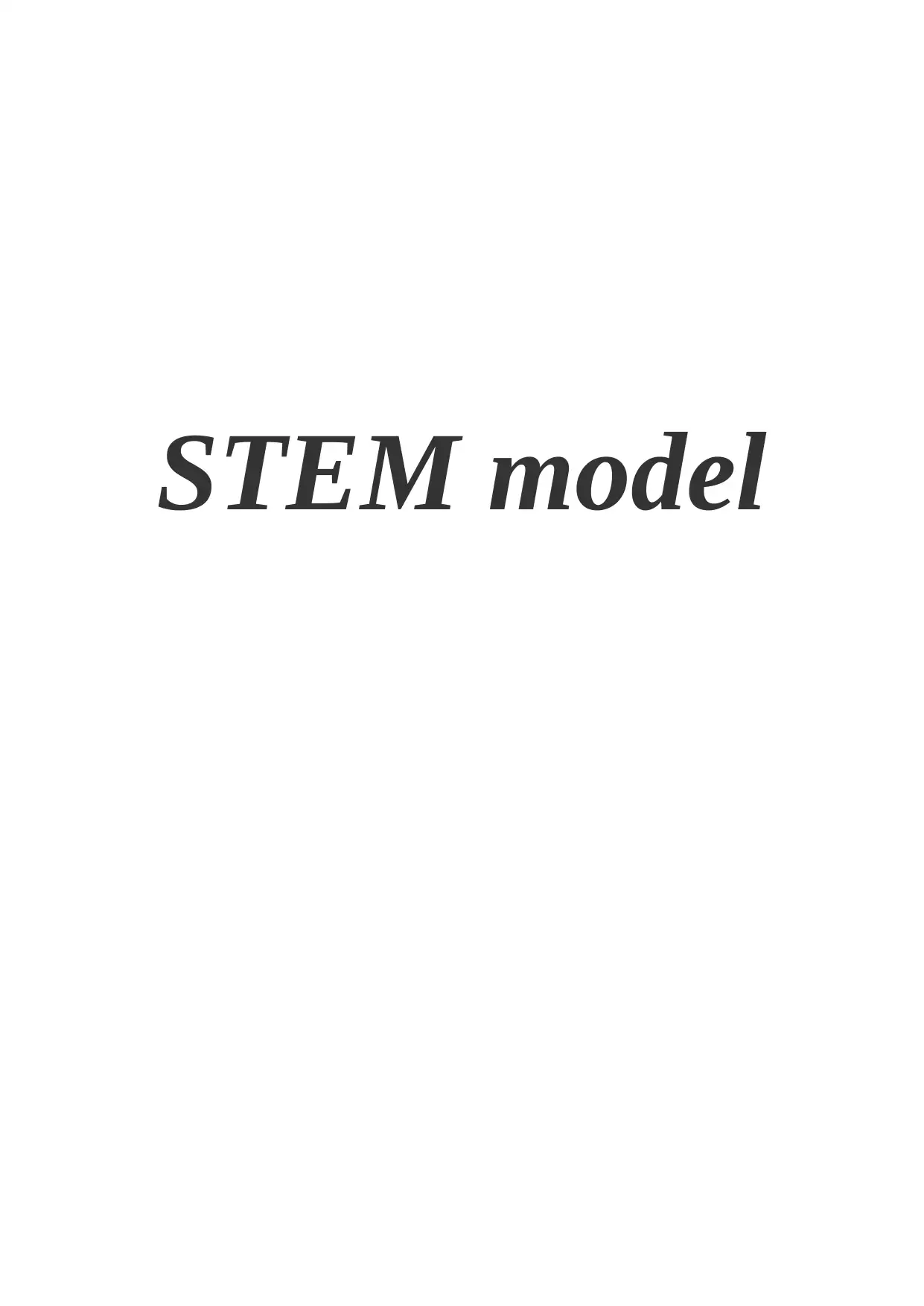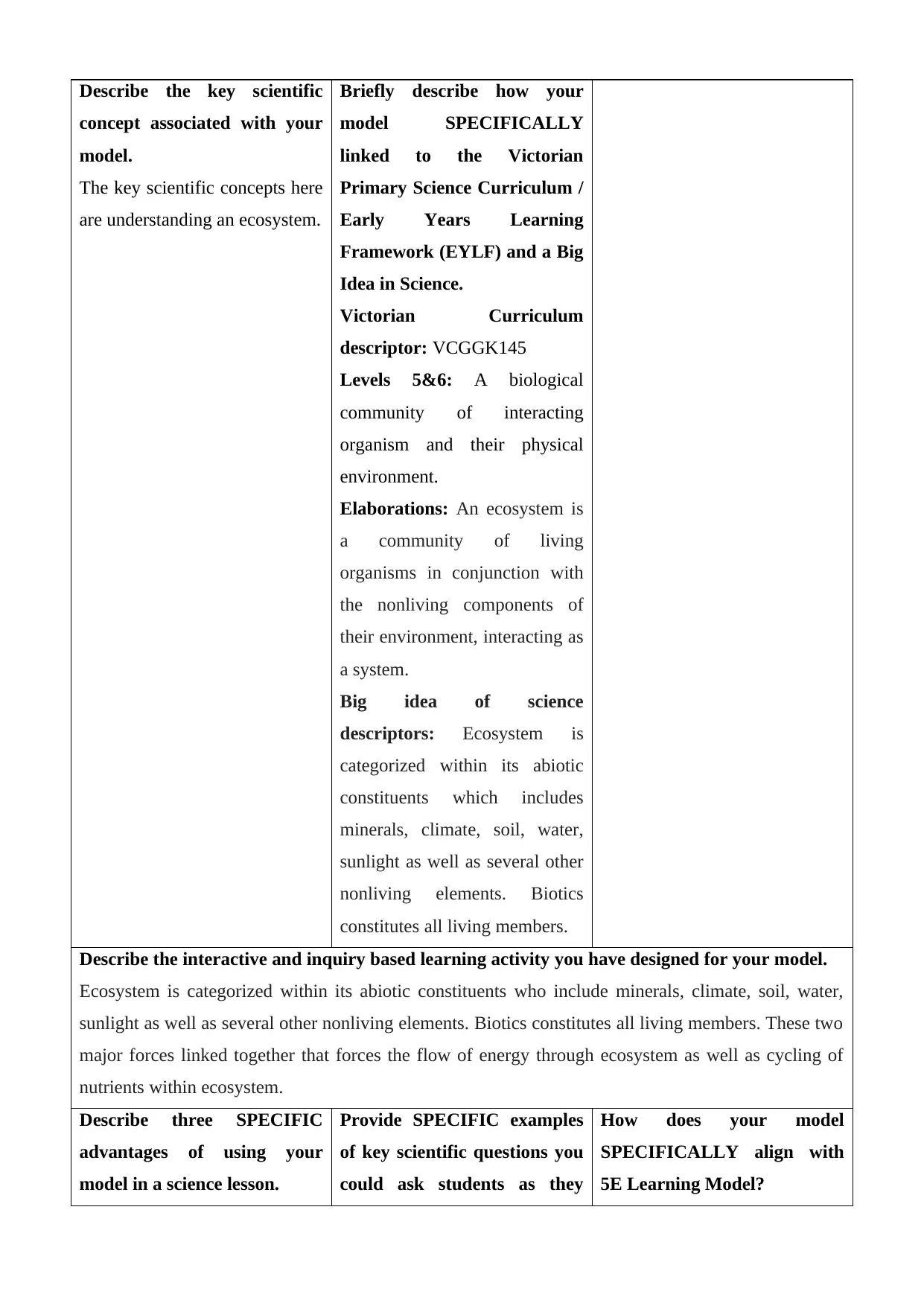STEM Model: Ecosystem, Scientific Concepts, and Student Engagement
VerifiedAdded on 2023/01/12
|4
|503
|64
Project
AI Summary
This assignment presents a STEM model designed to teach the concept of ecosystems, aligning with the Victorian Science Curriculum and Early Years Learning Framework. The model emphasizes the interaction of biotic and abiotic elements, and it proposes an interactive, inquiry-based learning activity. The assignment details how the model integrates with the 5E learning model (Explore, Explain, Engage, Elaborate, Evaluate), provides examples of key scientific questions, and outlines feedback mechanisms for diverse student performance levels. Additionally, it explores the model's alignment with STEM principles (Science, Technology, Engineering, and Mathematics), and it discusses the advantages and limitations of using the model in a science lesson. The provided references include books and journals relevant to the topic.
1 out of 4






![[object Object]](/_next/static/media/star-bottom.7253800d.svg)